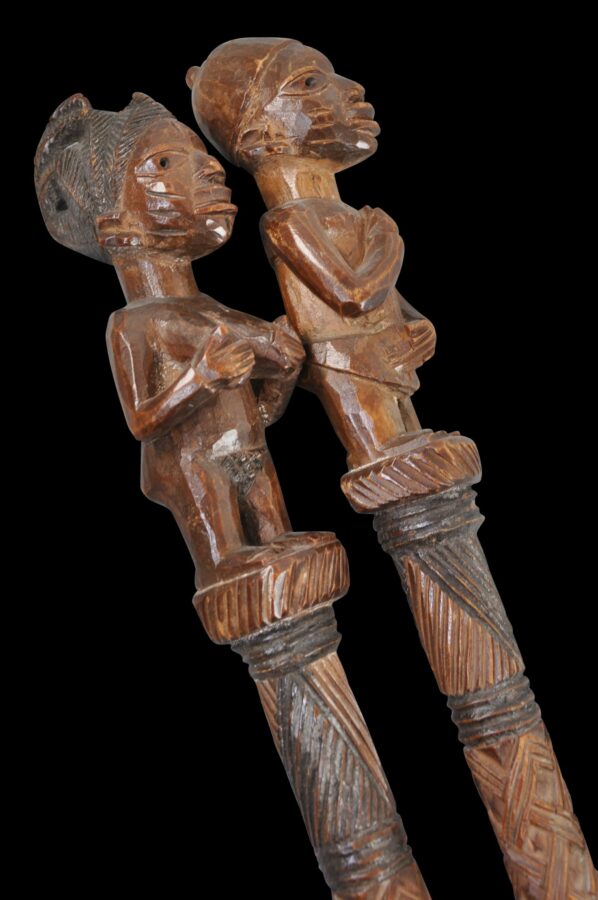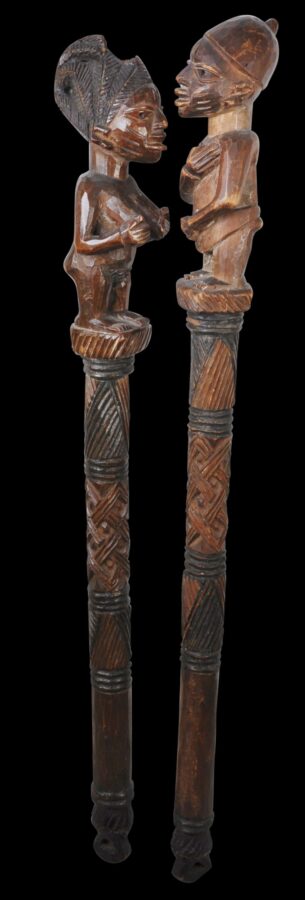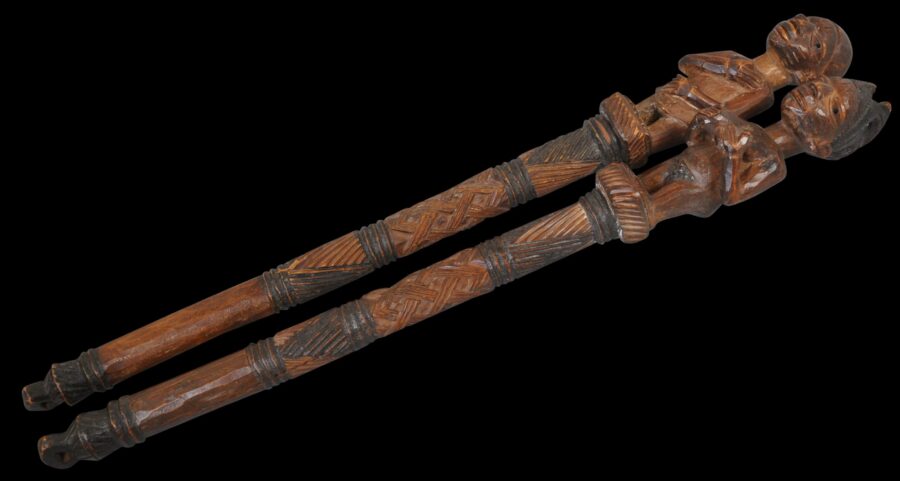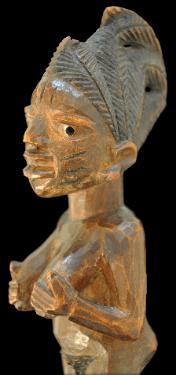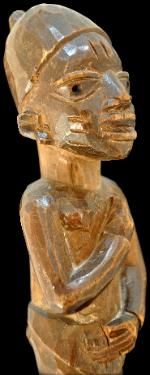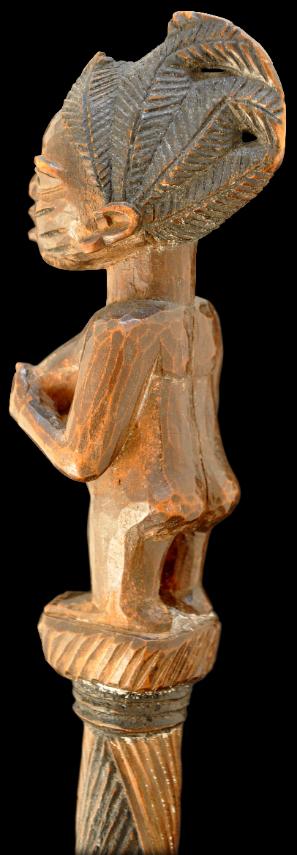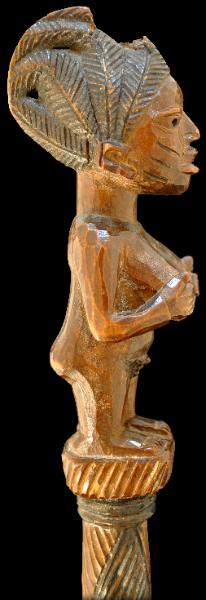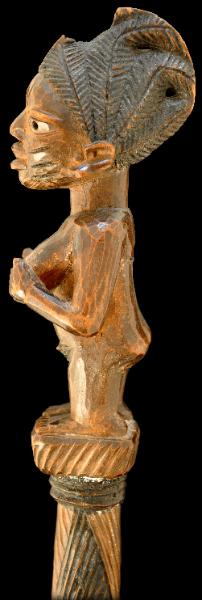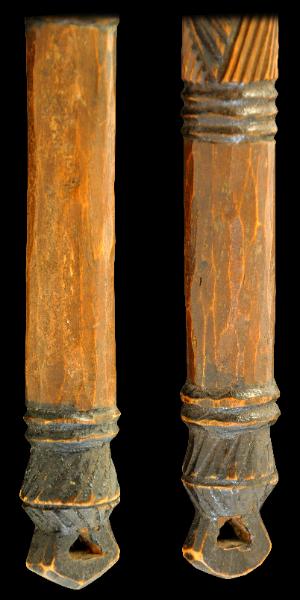Enquiry about object: 3119
Pair of Yoruba Ceremonial Ogboni Staffs
Yoruba People, Ogboni Society, Nigeria early to mid-20th century
height: approximately (female) 44cm, (male) 45cm
Provenance
UK art market
This pair of ceremonial staffs is finely carved as a male and a female. The male figure is fully clothed. He wears a long-sleeved blouse and an apron is wrapped around his waist. There is a suggestion that he is a priest, which comes from his headgear in the form of a cap. The female figure appears to be naked, although there is an indication that she is wearing something as long sleeves are apparent. Her coiffure is often associated with bridal (part of the her coiffure is now missing.)
The female figure has round and firm breasts. Her breasts are pressed by both hands. Her nipples are hidden beneath her finely carved fingers, as if she is protecting her modesty. She has no belly button. Her pubic area is a raised triangular area with incised cross-hatched patterns.
The male figure has very refined long hands and long fingers. His gesture is of a salutation.
Both figures have small but perky buttocks. Their eyes are aesthetically Yoruba: almond-shaped with prominent eyelids. Their irises are hollow. They have strong noses with flared nostrils. Their lips are full. Three vertical scarifications (pélé) are incised on their foreheads respectively. Three horizontal scarifications (àbàjà) are incised on each cheek.
The staffs are decorated with triangular line motifs. There are no repairs, some minor shrinkage-related cracking, and a glossy patina.
Ceremonial staffs such as these are rare. An example can be seen in Walker (1998, Fig. 18, p. 29). In a photograph taken by John Pemberton III in 1988, Chief S. I. Akindahunse is holding a similar staff for use in the Ogboni society. Chief S. I. Akindahunse is the grandson of the legendary carver Olowe of Ise.
The staffs are carried by the older members of the Ogboni society on important ritual occasions. The Ogboni society, also called the Oshugbo society, is traditionally a cult that worships Onile, ‘owner of the earth’. It has both male and female members. Today, it functions as a judicial authority. Even the kings are subject to its authority, and adjudicates over conflicts among individuals or groups.
References
Abiodun, R., H. J. Drewal & J. Pemberton III, Yoruba: Art and Aesthetics, The Center for African Art and the Rietberg Museum Zurich, 1991.
Bacquart, J. B., The Tribal Arts of Africa, Thames and Hudson, 1998.
Fagg, W., J. Pemberton III & B. Holcombe, Yoruba: Sculpture of West Africa, Collins, 1982.
Polo, F., Encyclopedia of the Ibeji, Ibeji Art, 2008.
Robbins, W. M. and Nooter, N. I., African Art in American Collections, Smithsonian Institution, 1989.
Walker, R. A., Olowe of Ise: A Yoruba Sculptor to Kings, National Museum of African Art, 1998.


